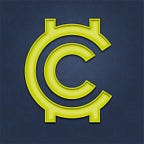To fully understand how NFT works, you need to disassemble the system of which it is a part. The functioning of tokens is directly related to blockchain networks, sales platforms, as well as other infrastructure elements.
The basis for the existence of NFTs is the blockchain
The first element of the NFT ecosystem is the blockchain. It stores information about all issued tokens and transactions with them. It performs the function of a technological base. And it, like any technology, has its pros and cons. Therefore, different companies create blockchain networks that solve certain user problems.
Ethereum is the basis for the existence of cryptocurrencies, as well as a platform with resources for developing decentralized applications.
Pros: maximum distribution due to the huge number of users around the world and, as a result, high data storage security.
Cons: low transaction speed — 15 operations per second, acceleration of operations for a fee.
Solana is a blockchain for building user-centric and highly scalable applications.
Pros: high speed and efficiency of operations — up to 65,000 per second, a low percentage for transactions.
Cons: test mode of operation and periodic failures.
Flow is a network designed primarily for creating decentralized games and working with NFT tokens.
Pros: cheaper transactions, plans to strengthen the network, and increase the speed from 150 to 100,000 operations per second.
Cons: a young network, it is not known what will happen in the future.
Ethereum, Solana, and Flow are first-level blockchains. There are also second-level networks and so-called sidechains.
Polygon is an independent second-level blockchain with its own data verification algorithm.
Pros: high speed — up to 65,000 renders per second, low fees, active NFT support, security level comparable to Ethereum, compatibility with ETH and other second-tier developments.
Cons: young project.
Non-fungible tokens also support other L1 and L2 blockchains, including NEO, Tezos, EOS, Secret Network, and TRON.
Platforms for selling NFTs: 5 popular marketplaces
The second element of the NFT ecosystem is marketplaces — platforms for buying, selling, exchanging, donating, and sometimes even creating non-fungible tokens. They differ in the types of transactions available, trading volumes, and other features of the work.
OpenSea is a multifunctional platform with a total trading volume of more than $600 million. It offers the sale of tokens at fixed prices or auctions with a time limit. Powered by Ethereum and Polygon.
Pros: Extensive selection of works and opportunities for transactions.
Cons: high fees for posting offers.
Rarible is a Russian marketplace with the option of creating and storing tokens and a trading volume of about $160 million. Implementation forms are a deal at a fixed price or an auction. Based on ETH.
Pros: reward for authors in case of resale of the token.
Cons: high network commissions for each offer.
Nifty Gateway — transactions for fiat funds. Large selection of forms — lotteries, auctions, open releases. The base is Ethereum.
Pros: free listing, resale fee for the author.
Cons: withholding interest from each transaction.
SuperRare is a platform for collecting rare NFT art. There are also auctions, open offers, and fixed price options to choose from. The volume is more than $70 million. The technological base is the same.
Pros: free listing, confirmed authenticity of each work, a high percentage in favor of the marketplace from the first sale.
Cons: low commission on subsequent transactions.
NBA Top Shop is the only NFT marketplace with a competitive trading volume powered by Flow. Unlike the previous 4, it specializes not in collecting, but in sports games. The sale is carried out for a fixed price.
Pros: low sales commission.
Cons: narrow topics — only videos from past games of the basketball league, commission for transactions.
Today, there are dozens of marketplaces on the crypto market. Not all of them are convenient and offer favorable conditions for cooperation.
NFT Platforms from Cifris: A Full Range of Token Management Tools
Let’s sum it up. Blockchain and marketplaces are the core components of the NFT ecosystem. However, auxiliary elements are no less important for its existence:
● interfaces and galleries;
● operation protocols;
● user applications;
● object storage;
● NFT fractionation services.
Cifris provides its clients with access to the entire pool of tools. Create, sell, buy, split, and store your tokens within one window. Safe, convenient, and profitable.
- Drop your email on our website!
- Join our Instagram to find out more about what we are up to!
- Follow our Twitter to learn the latest news!
- Get updated on new community contests on our Telegram!
We are excited to share this journey with you.
